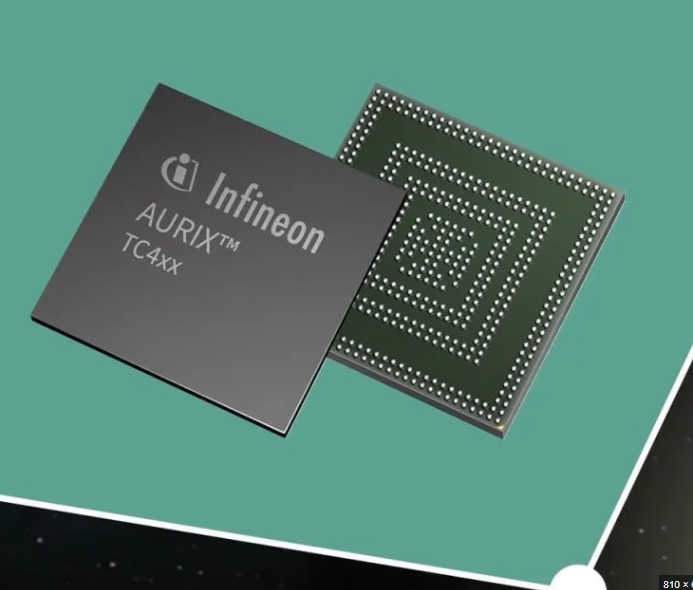RISC-V Accelerates Entry into Automotive Market, Implementation Challenges Remain
Currently, automotive architectures are characterized by high fragmentation, with multiple different instruction architecture layers. As the era of software-defined vehicles arrives, this fragmented architecture presents processing challenges. Therefore, future architectures are expected to evolve toward more streamlined directions.
Infineon Becomes First Manufacturer to Launch Automotive-Grade RISC-V MCUs
In March, Infineon announced plans to introduce new RISC-V-based automotive microcontrollers in the coming years, leading the application of RISC-V technology in the automotive industry.
Specifically, this new series will be incorporated into Infineon’s automotive MCU brand AURIX, expanding the company’s current automotive MCU portfolio based on TriCore (AURIX TC series) and Arm (TRAVEO series, PSOC series).

The new AURIX series will cover a wide range of automotive applications from entry-level MCUs to high-performance MCUs, with a scope that will exceed existing products on the market.
Infineon continues to collaborate with leading semiconductor industry enterprises through the joint venture Quintauris, committed to accelerating the industrialization process of RISC-V-based products.

To date, Infineon has become the first semiconductor supplier to announce an automotive-grade RISC-V MCU series.
Most Western MCU suppliers tend not to directly associate their decisions with the continuing rise of China’s RISC-V trend.
Infineon insists that its choice of RISC-V is due to customer demands when building software-defined vehicles, a demand that is [geographically independent].
Tom Hackenberg, Chief Analyst in the Computing and Software sector at Yole Group, points out that even Western MCU leading manufacturers cannot ignore China’s growing demand for RISC-V ecosystems—the cost of exclusion is too high.
China’s motivation for promoting RISC-V is very clear: to build an autonomous ecosystem that is less dependent on Western technology suppliers.
Numerous Domestic Manufacturers Join the “RISC-V Automotive” Movement
In September 2024, Great Wall Motors successfully powered up its RISC-V architecture-based automotive-grade MCU chip, Bauhinia M100, which had been under development since 2023.
This chip features significant product characteristics, including high computing power, modular design, reconfigurable cores, and four-stage pipeline design, demonstrating excellent performance in processing speed, time optimization, and future upgrade expansion.
Its enhanced ESD functionality meets increased requirements for static electricity in winter and off-road environments, with a 38% performance improvement.
This year, the first batch of vehicles equipped with the M100 chip is expected to begin mass production in the third quarter, with an estimated 2.5 million vehicles to be equipped with this chip within five years.
Meanwhile, Bauhinia Semiconductor has also initiated independent research and development of domain controller chips with ASIL-D safety levels.
Also in 2024, Dongfeng Automobile released a high-performance automotive-grade MCU chip—DF30—in November.
This automotive-grade MCU adopts the RISC-V architecture and uses Nuclei’s NA900 series processor IP. It features a multi-core architecture with a maximum frequency of 350MHz.
Developed using domestic 40nm automotive-grade process technology, it achieved a fully domestic closed-loop process, with functional safety levels reaching ASIL-D.
Notably, Nuclei’s NA900 automotive-grade processor is the world’s first RISC-V CPU IP to receive ISO26262 ASIL-D product certification.
National Integrated Circuit (C*Core) revealed during recent investor activities that in 2025, it has already initiated the design and development of its first RISC-V architecture-based high-performance automotive-grade MCU chip, CCFC3009PT.
As an early member of the RISC-V Foundation, Andes Technology’s RISC-V development tools and compilers are approaching ARM’s commercial level and support automotive-grade functional safety standards (such as ISO 26262), suitable for autonomous driving chip designs requiring high reliability.
Currently, Andes Technology has collaborated with multiple automobile manufacturers to develop customized processors, especially in the fields of AI inference and real-time control.
RISC-V’s Clear Advantages as the Preferred Choice for Automotive Chips
The demand for independent control of automotive chips is increasingly urgent.
RISC-V’s open-source nature provides greater peace of mind for the automotive supply chain.
Given the current high dependency on Arm architecture in the automotive chip field, especially in computing and control chips, with over 80% of the global smart cockpit and intelligent driving chip market using Arm architecture.
RISC-V, with its open-source characteristics, lowers the threshold for technology application, thus promoting the process of domestic chip production.
With trends toward vehicle electrification and intelligence, RISC-V’s flexible customization capabilities have gained broader application space.
In the development of electric intelligent vehicles, automotive architectures exhibit highly fragmented characteristics with multiple instruction architecture layers.
RISC-V’s core advantage is that regardless of the processor performance used—from MCUs to CPUs to AI processors—the programming methods and toolchains remain consistent.
This indicates that developers familiar with MCUs can easily transition to CPU-related software development work, significantly enhancing software reusability.
For automobile manufacturers, if their entire vehicle architecture fully adopts RISC-V technology, it will achieve high transparency in the supply chain, bringing great convenience to product design, upgrades, and other aspects.
RISC-V Faces Challenges in Variety and Ecosystem Completeness
At the product level, China’s RISC-V core-based automotive chip product range is not yet complete and cannot meet comprehensive application needs.
China’s RISC-V-based automotive chip products are limited in number, mainly concentrated in low to medium computing capability application scenarios, making it difficult to meet complex requirements such as high-performance computing and intelligent driving. Additionally, a scaled product line has not yet formed to address various application scenarios.
From the perspective of IP providers, there are relatively few RISC-V IPs available in domestic and international markets, and peripheral IP support is incomplete, posing challenges for automotive chip design based on RISC-V.
In comparison, ARM architecture is highly mature, with comprehensive coverage from entry-level low computing power chips to high computing power chips for servers and AI applications, with annual shipments of approximately 30 billion units and over 20 million developers.
This not only provides downstream enterprises with more flexibility in product design but also significantly reduces development and market entry costs.
At the application level, toolchain adaptation is not yet complete, and the development software and application ecosystem are not yet mature, further increasing the difficulty of applying RISC-V chips in the automotive field.
In the operating system domain for intelligent driving and smart cockpits, RISC-V faces significant adaptation challenges with mainstream operating systems.
Historically, Microsoft Windows and Intel x86 architecture (Wintel alliance), ARM and Google Android (AA alliance) took decades to achieve efficient adaptation.
For RISC-V to achieve efficient porting with mainstream operating systems like Linux, HarmonyOS, and Android, it faces challenges such as large porting code volume, numerous design modules, and high architecture and optimization difficulties, making it hard to form a commercialized closed loop in the short term.
Although the application of RISC-V technology in the automotive industry is currently in its early stages, its large-scale application is expected to gradually become a reality in the next five to ten years.
In summary
Against the backdrop of rapid development in intelligence and electrification, automotive chips are becoming a core area of global industrial competition.
Facing growing demands for high computing power and intensifying technology blockades, RISC-V, as an open-source architecture, is being held in high regard for its flexibility and customization advantages, with the potential to become an important driving force for the independent development of automotive chips.